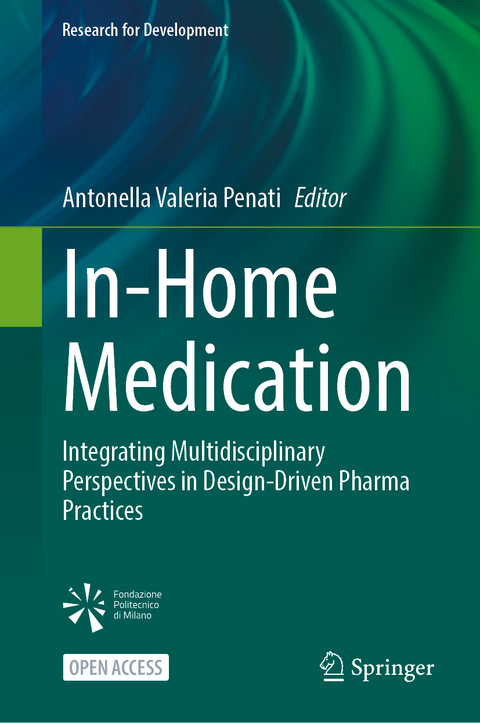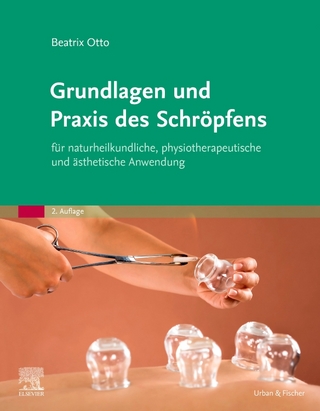
In-Home Medication
Springer International Publishing (Verlag)
978-3-031-53293-1 (ISBN)
- Noch nicht erschienen - erscheint am 30.01.2025
- Versandkostenfrei innerhalb Deutschlands
- Auch auf Rechnung
- Verfügbarkeit in der Filiale vor Ort prüfen
- Artikel merken
This is an open access book.
This book provides a distinctive perspective on the daily utilization and consumption of medicines and drugs. It seamlessly integrates the research traditions of the medical and pharmaceutical realms with the approach of fostering the relationship between users and products, a characteristic of design and user studies. By applying a diverse range of expertise, the authors endeavor to reestablish the interconnectedness of issues that place the drug and the indispensable information for its use directly into the hands of the patient. The primary objective is to formulate an initial set of recommendations and compile a repertoire of best practices. Consequently, this book becomes an indispensable resource for students, professionals, and academics engaged in design culture, as well as those operating within the healthcare domain, such as the pharmaceutical industry, medical practitioners, and pharmacists. It is equally valuable for individuals working in institutions responsible for regulating medicines and overseeing their presence in the market. As a comprehensive guide, this book serves as an essential read, offering insights that bridge the gap between various sectors involved in the intricate landscape of medicine and drug consumption.
Antonella Penati (Author and Editor) is Full professor at the Department of Design, Politecnico di Milano. Her research interests, since her doctorate, have converged on the role of objects in social innovation processes. Special focus on the pharmaceutical products as socio-technical objects and the care processes they activate. She has presented her research work at Conferences and in National and International Journals. She has supervised M.Sc. degree dissertations and numerous project workshops on these topics. In 2019, she founded the Pharma Design Studies research group at the Department of Design of Politecnico di Milano.
1 Towards in-home medication: Medicinal products as daily objects.- Part 1 Objects of science: the pharmaceutical industry as a place of preciseness.- 2 Medicine packaging legislation and its evolution according to technological innovation for better healthcare support.- Addendum 1 - Regulatory references. - 3 Primary medicine packaging and quality control.- 4 Pharmaceutical forms and primary packaging: a glossary.- 5 Secondary packaging of medicines: design processes for the pharmaceutical industry.- 6 Secondary packaging and leaflets: a glossary.- Part 2 Prescribing and dispensing: accompanying the patient to the correct use of medicines.- 7 Moving the care process in the in-home context: the therapeutic prescription.- 8 Dispensing medicines: A necessary link between doctor and patient.- 9 The future digital pharmacological prescription between therapy adherence and integrated healthcare personal plans.- 10 Navigating the complexities of the OTC medicine ecosystem.- 11 Dealing with medicines through online platforms and communities.- Addendum 2 - Medication errors data.- Part 3 The daily life as a place of inaccuracy - the domesticity of therapy.- 12 Medicines as designed objects.- 13 The in-home place of medications: perspectives of domestication.- 14 In-home: Medicinals treatment as a learning process.- 15 Use phenomenologies. Observing the user while taking pharmaceutical therapies.- 16 Use phenomenologies. Oral solid forms in blister packs.- 17 Use phenomenologies. What does the user do with the secondary medicine packaging and package leaflet?.- Part 4 - The pharmaceutical product system: premises for the definition of a repertory of good practices.- 18 How political and cultural challenges are impacting pharma industries.- 19 Medicinal products: when innovation meets the patient.- 20 Pharmaceutical packaging according to the "Packaging Ethics Charter".- 21 Sensory qualities of the medicines: from problems to proposals.- 22 Compendium: step toward design-oriented practices in the pharma industry in a multidisciplinary perspective.- Addendum 3 The name of medicines. LASA medicines.- Addendum 4 - Methods of user involvement.- Addendum 5 - Error Reporting Procedures.
| Erscheint lt. Verlag | 30.1.2025 |
|---|---|
| Reihe/Serie | Research for Development |
| Zusatzinfo | II, 560 p. 249 illus., 110 illus. in color. |
| Verlagsort | Cham |
| Sprache | englisch |
| Maße | 155 x 235 mm |
| Themenwelt | Sachbuch/Ratgeber ► Gesundheit / Leben / Psychologie |
| Medizin / Pharmazie ► Gesundheitsfachberufe | |
| Medizin / Pharmazie ► Pflege | |
| Technik ► Maschinenbau | |
| Schlagworte | Design and pharmaceutical products • Design communication for accessibility to therapies • Electronic prescriptions • Ethics Charter of medicine packaging • Gender medicine in drug development • Guidelines for improving medicine usability • Law and innovation in Pharma industry • Medicine and integrated individualized plan • Medicine Packaging, package leaflet and devices • Medicines and person-centered design • Medicines and primary and secondary packaging quality • Medicines as "technical object" and "daily object" • Medicines as “technical object” and “daily object” • Medicines in domestic context and user behavior • open access • Patient and caregiver in at-home therapies • Patient engagement in drug development • Pharma industry and user-centered innovations • Sensory qualities of the medicines • Social networks in medicines' communication • Social networks in medicines’ communication • Therapy adherence and medicines prescription |
| ISBN-10 | 3-031-53293-7 / 3031532937 |
| ISBN-13 | 978-3-031-53293-1 / 9783031532931 |
| Zustand | Neuware |
| Haben Sie eine Frage zum Produkt? |
aus dem Bereich


